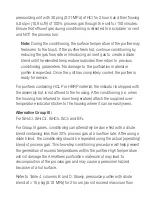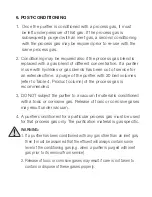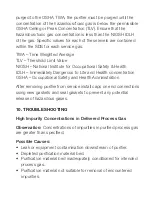
• When the purification material is initially exposed to some process
gases, substantial amount of process gas may react or be adsorbed
on the purification material, resulting in initially unstable purifier perform-
ance. For best results, such purification material must be conditioned
with intended process gas before start up.
• The specific conditioning procedure required depends upon the nature
of the process gas and the type of purification material used. Carefully
follow the procedure that is provided. In particular, do not exceed the
recommended process gas flow rate as overheating and damage to
the purification material could result.
• Conditioning should be done after purifier installation. Conditioning is
also recommended if a purifier has been out of service for two weeks
or longer (especially for Intended Process Gases within Group IV). When
the process gas consists of a blend of two or more gases, conditioning
is recommended if the purifier has been out of service for three days or
longer. Conditioning ensures that the relative percentage of the
constituents remains unchanged upon passage through the purifier.
• Once the purification material is conditioned with the process gas, it
should be kept under positive pressure of that process gas at all times.
Should purging with an inert gas ever be required, the purification
material will require conditioning again before returning to service.
Consult with Pall Corporation SLS for technical assistance and
recommendations.
• DO NOT subject previously conditioned purification material to a vacuum.
Any hazardous gas physically adsorbed on the purification material
surface may be released when the material is subjected to a vacuum.
Contact Pall Corporation SLS for technical assistance with sub-
atmospheric operation of purifier.
















































